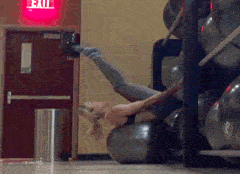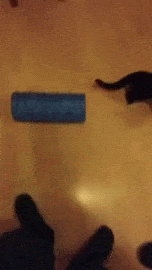
Ten points if you’ve clicked this far.
Maybe that means you’re interested in working out but you’re not sure where to start? Maybe you do work out, but you wanna touch up your form? Maybe you’re just as bored as a lone fart trapped mid-colon, and are looking for something to keep your attention for a few moments?
Whatever your story, you go Glen Coco.

PEDESTRIAN.TV has compiled this nifty manual on how to warm up/strrrrrretch/take care of your bod properly before and after your workout, because taking good solid care of your muscles and ligaments is mega important if you don’t want to wake up with rigor mortis the morning after a workout.

The process starts at the verrrrryyyyyy beginning, before you’ve even popped a squat or picked up one dumbbell.
PRE-WORKOUT
WARMING UP:
Think of your body as a rubber band. A big, sexy, rubber band. If you’re a rubber band that stays hunched over a computer all day, doesn’t move much past sitting down/getting up and then slingshots into a brazen weights regime with no prep – you’re probably gonna snap.

To stop this from happening and to keep yourself in one piece, you should spend five to ten minutes before your workout warming up.
This could include some gentle skip rope action, a light jog, some lunges, jumping jacks or getting some pace on an exercise bike – anything that gets your blood circulating.
POST-WORKOUT
STRETCHING:

It’s a contentious point, this one. Some research suggests stretching does diddly-squat… but then again, we’ve never gone to a fitness class that didn’t incorporate some form of stretching into the class, even as a warm down.
If anything, adding some stretches into your routine can help maximise flexibility and increase your range of motion. E.g. if you have tight arse calf muscles, you mightn’t be able to squat past a certain point. But if you stretch them regularly, you’ll improve the flexibility there and gradually be able to do full ones. Hello, squatzilla.
How to do it right?
+ You should stretch to the point where you feel mild tension, and stop there. If you’re pushing yourself into it to the point of pain, you’re stretching too far.+ Aim to hold every stretch for 20 to 30 seconds. This gives your muscles a chance to relax.+ If one part of your body feels super tight loike a tiger, work on it for longer. The more you stretch, the more flexy it’ll become.+ It’s tempting, ’cause the momentum can help you stretch further – but don’t bounce while you’re holding the stretch. Bouncing can cause microtrauma in the muscle, leading to scar tissue which in turn limits your flexibility.
Here’s a trusty YouTube tutorial to show you a few moves:
FOAM ROLLING
Your first time witnessing a person on a foam roller is memorable for a few reasons. They’re probably grimacing like the devil himself, wincing loudly and looking highly Pat Mullens-esque.

The fancy term for it is self-myofascial release, which translates to self-massage. It involved rolling up and down on a cylindrical piece of foam until you feel a ‘trigger point’ or knot, and stopping on that spot for 10 – 20 seconds. This helps to release the tightness in your muscles, easing pain and assisting recovery.
Warning – it feels similar to when you hit your funny bone. You can how it’s done here:
Go forth, and ease the burn.
Photo: Us.



